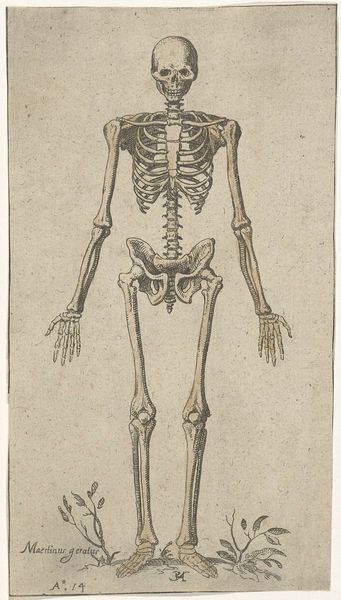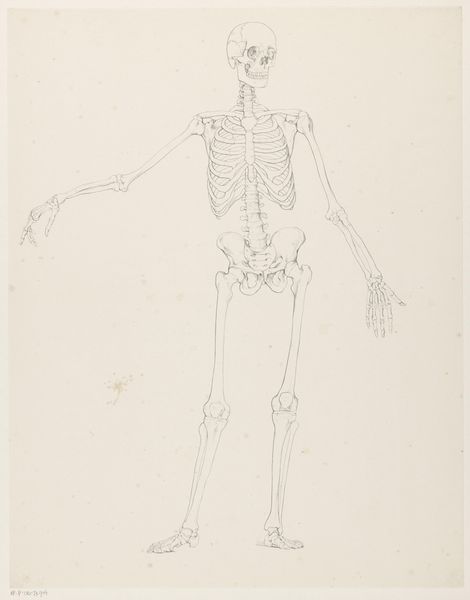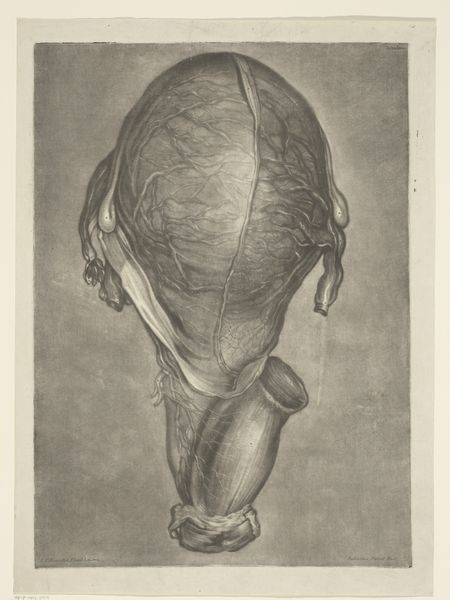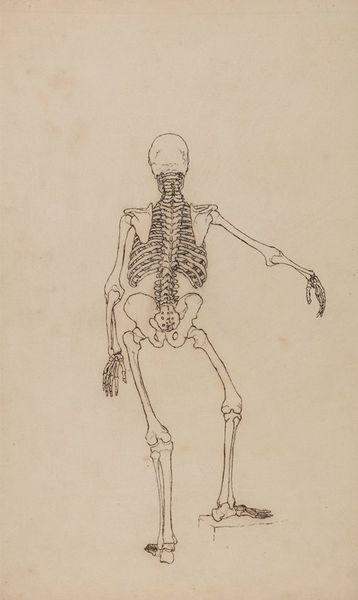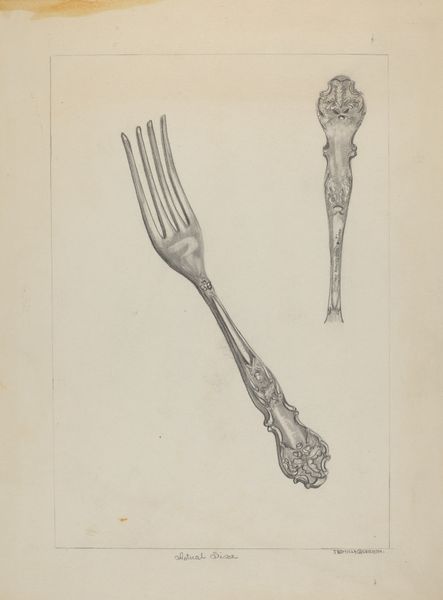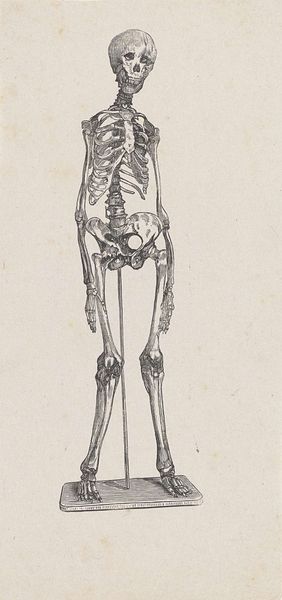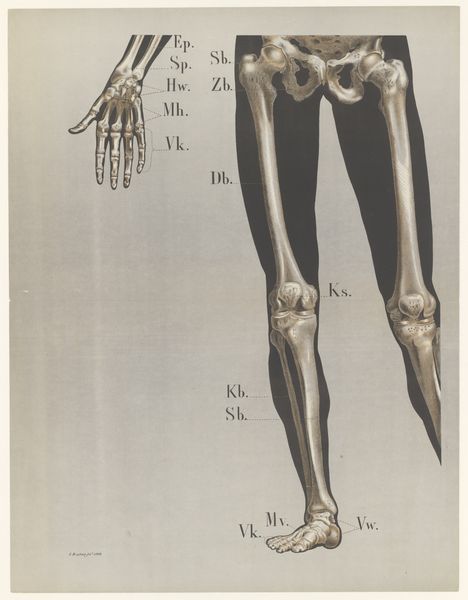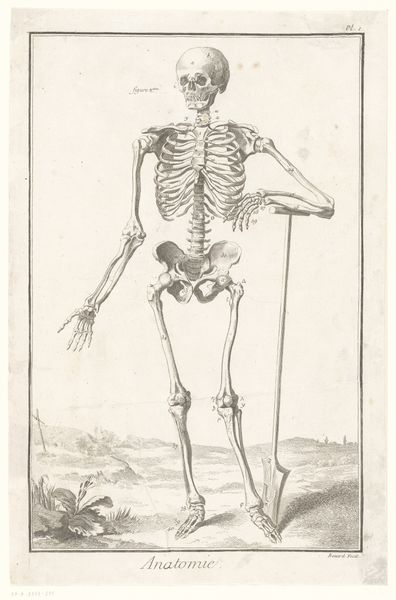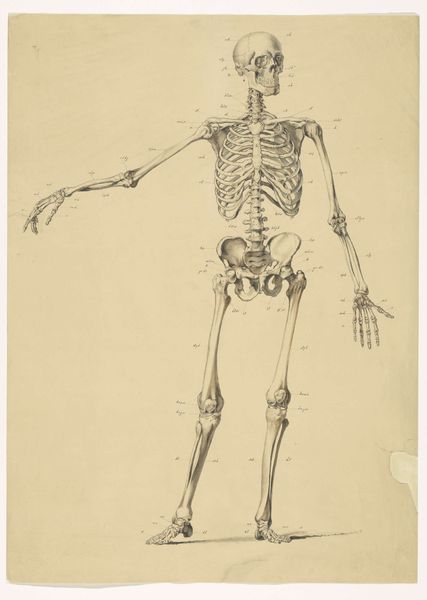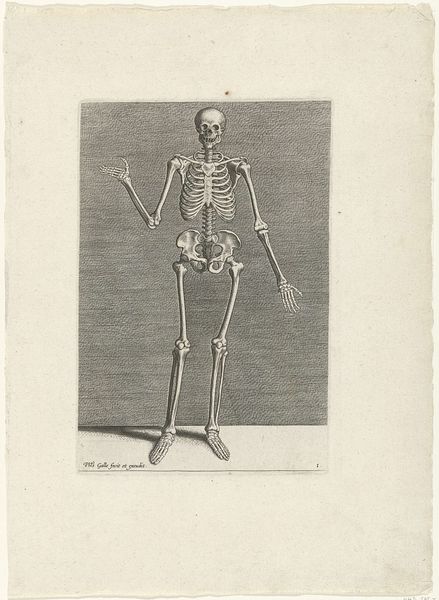
Dimensions: image (irregular): 42.39 × 36.04 cm (16 11/16 × 14 3/16 in.) sheet: 48.9 × 32.07 cm (19 1/4 × 12 5/8 in.) board: 32.07 cm (12 5/8 in.)
Copyright: National Gallery of Art: CC0 1.0
Daniel Huntington's Rear View of a Skeleton is a drawing rendered in graphite on paper and mounted on board. The artist used the graphite to create a monochromatic drawing of a human skeleton, carefully articulating each bone, its texture and form. The use of graphite allows for delicate shading and detailing, capturing the play of light and shadow on the skeletal structure. As a readily available and relatively inexpensive material, graphite democratized drawing, making it accessible for both artistic and scientific illustration. Huntington skillfully depicts the human anatomy, emphasizing the structural integrity of the skeletal system. The artist’s interest in the human form connects this work to scientific inquiry, reflecting the growing intersection of art and science during the 19th century. This use of drawing, with the inherent need for careful observation and accurate rendering, speaks to a broader cultural context where artists explored different representational strategies. Ultimately, understanding the social context of the artist's materials and modes of production can help us see beyond traditional distinctions between art and craft, and towards a richer understanding of artistic expression.
Comments
No comments
Be the first to comment and join the conversation on the ultimate creative platform.
